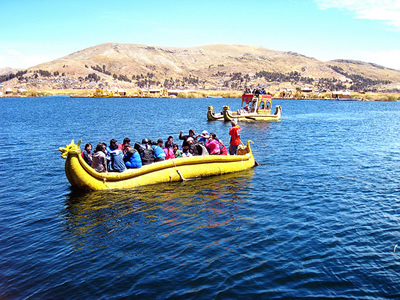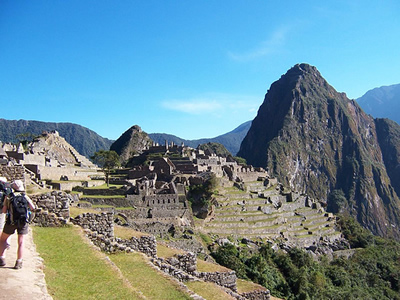Swallowed by the jungle of Peru, as the remains of Inca culture fled bushy and swampy areas, pursued by the armor and conquering cross. Machu Picchu remained so hidden, perched on high, become silent witness to a settlement that fed on precious metals.
Photography by fabulousfabs
Discovery of Machu Pichu:
His returns to this world meet its centenary in 2011. After centuries of neglect, Machu Picchu became a place belonging to the mythology, oral tradition passed from father to son in front of the fire in a miserable hut. Was the explorer and archaeologist Hiram Bingham who managed to discover the exact location of the legendary Inca city.
These one hundred years have been replaced at Machu Picchu in its rightful place and become one of the icons travelers dream. But you know, fame has its dark side, and the tourist scene is called speculation and privatization. A few minor inconveniences against which we must fight to abstract and enjoy the true beauty of the Inca sanctuary.
After all the details and incidents that accompany each trip and be back in the lines, one sits on top of Huayna Picchu and wonders what is more beautiful, the huge blocks of stone fitted to perfection or the environment of peaks and valleys that envelop? I did not get a definitive answer even for myself, so everyone will have to go and do your own reflection.
Entering the Empire of Manco Capac:
We had left the huge mirror height is Lake Titicaca, to get to Cusco, heart of the Inca Empire and later of the Viceroyalty colonizer. The entrance to the Sacred Valley can not be more interesting. If you are not careful, Cusco can catch us for months within the walls of history, conquests, atrocities and rich cultures that have ended up merging into the streets.
Photography by Bruce Tuten
Fighting the magnetism that made us return again and again after minor incursions Cusco in the Sacred Valley, we decided it was time to go to Machu Picchu. What to pass a few weeks was not just because we ration the oxygen level that we reached the brain, after all, came from the Bolivian highlands, but torrential rains a few months earlier had been forced to close Machu Picchu.
In addition to the closure of the mine, access by train had been seriously damaged and only worked on their last leg, but this small detail could only confirm at the last moment, when we bought the ticket to Aguas Calientes and we had to do most part of the tour van.
The full ticket train from Cusco, costs about 70 € to change back and forth. In our case we only traveled on rails 28 of the 150 km separating Cusco to Machu Picchu. Is it a scam and under normal conditions, but at least you can enjoy the train ride in the race instead of suicide Peruvian drivers, perhaps a little indignation recess. It was not our case.
Roads leading to Machu Picchu:
The best known and in his own right is the Inca Trail, but today has become a very expensive and crowded trek, which costs about $ 500, and you can not do independently and have to book in advance to find room on the waiting list.
Like after 9 months of traveling, we are not left over $ 500 at the time, and my religion forbids me to pay these amounts abusive walk across country, looking for alternatives. Cheaper access is the Inca Jungle, which is the alternative to trekking the Inca Trail, which also can be done for free. What were valued, but we wanted to reserve forces to the Colca Canyon and the Cordillera Blanca, so I finally went with the train.
In Aguas Calientes, the gateway to Machu Picchu can be reached only on foot or by train, so if you decide for any of the trek, a good alternative to the train from Cusco, is to travel on your own from Cusco to Ollantaytambo and Piscacucho (the bus costs about 10 soles, 2.5 €), and we here give in and get on board, because the road does not follow. The train ticket costs $ 30 from Piscacucho and not $ 48 and from Cusco on Backpacker rate. Abusive still pay $ 30 to go by train 28 km an hour and a half, but the landscape fades a little indignation.
Photography by Ianz
The real problem is that this train carriage is exclusively for tourists and managed by the company Orient Express, the Chilean capital and English, so that these rates more characteristic of western luxury, or even stay in Peru.
Aguas Calientes, a town of passage:
Aguas Calientes is a town that lives for tourism, do not expect to find even good food at reasonable prices or anything interesting, except for a night’s rest before crossing the Urubamba river and climb to the Inca sanctuary.
Here I will make an exception, and although the village consists mainly of hotels and restaurants, we happened to coincide with a folk dance and devils that show perfectly the syncretism of Catholicism and Incan beliefs that underlie many of today cultural manifestations of the Peruvian Andes.
That night we went to bed early, ‘old mountain’, better known as Machu Picchu awaited us the next day and had to regain strength. To reach the gateway to Machu Picchu are two options, but both are recommended to wake up if you want to climb Huayna Picchu:
1 .- The bus that zigzags up, it costs about 7 € to change and takes just under twenty minutes.
2 .- Walking and climbing the steps that break on zigzag road, cutting into the heights and require that effort which then makes us appreciate more what we found before us.
As you can imagine, choose the second option. Much more healthy, ecological and economic.
The reasons for leaving Aguas Calientes when it is still dark, is to get the number that will allow us to scale (clockwise semi metaphorical) the Huayna Picchu to see the citadel still wrapped up in the clouds.
Huayna Picchu is a mountain that rises against Inca construction and for which access is restricted and limited due to the narrowness of the road. The climb is not very complicated and can be done in an hour, but the stone steps are very steep in some places and we must be careful not to slip and rush into the void. Machu Picchu is already famous enough without this news.
The second reason not to throw the clock out the window is the first image of the citadel, sensed between the shreds of fog early in the morning covering Machu Picchu, before giving way to sun, Inti, the Great God in the Inca culture.
Good Luck!
Leave a Reply
You must be logged in to post a comment.



Recent Comments